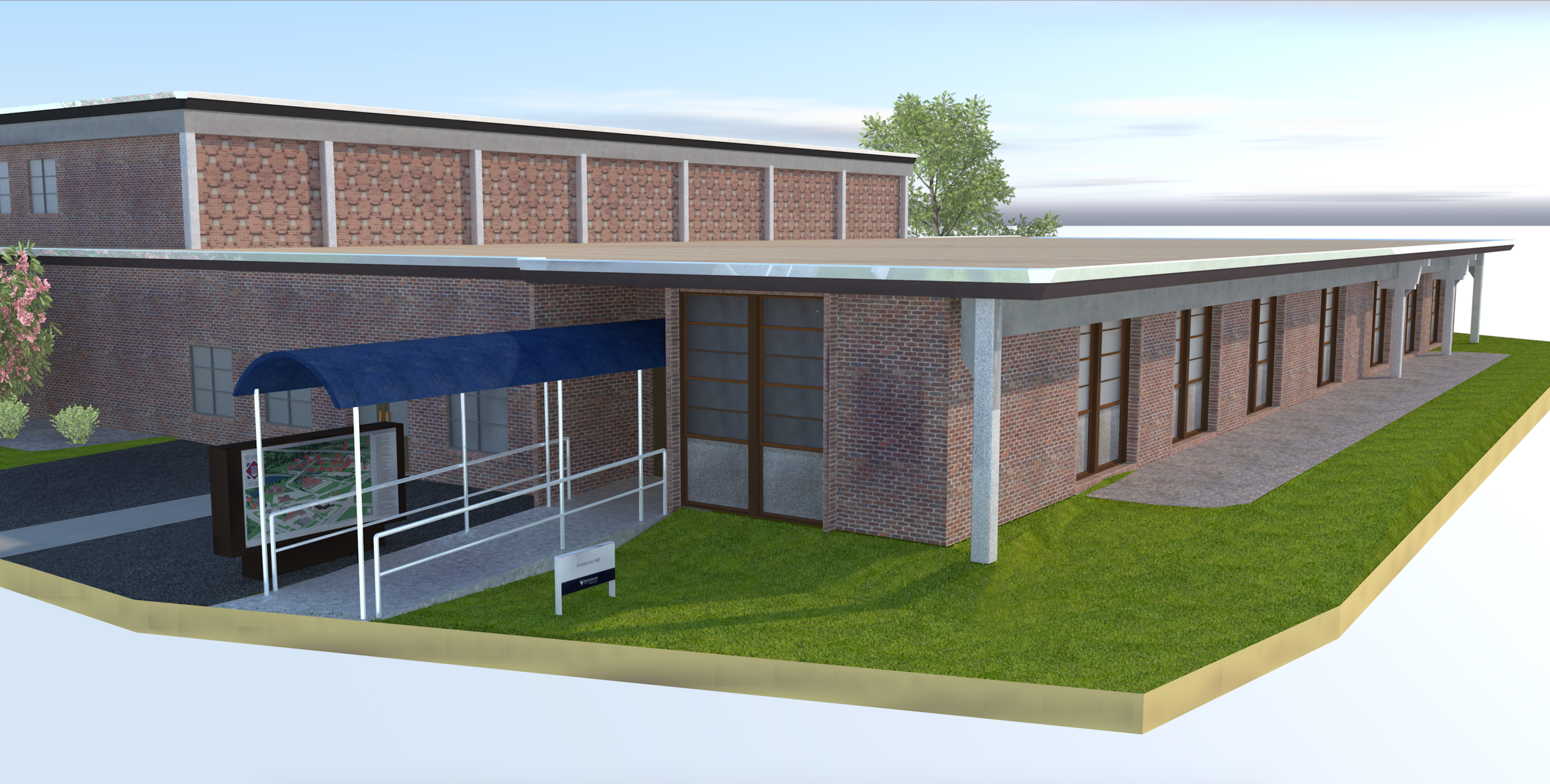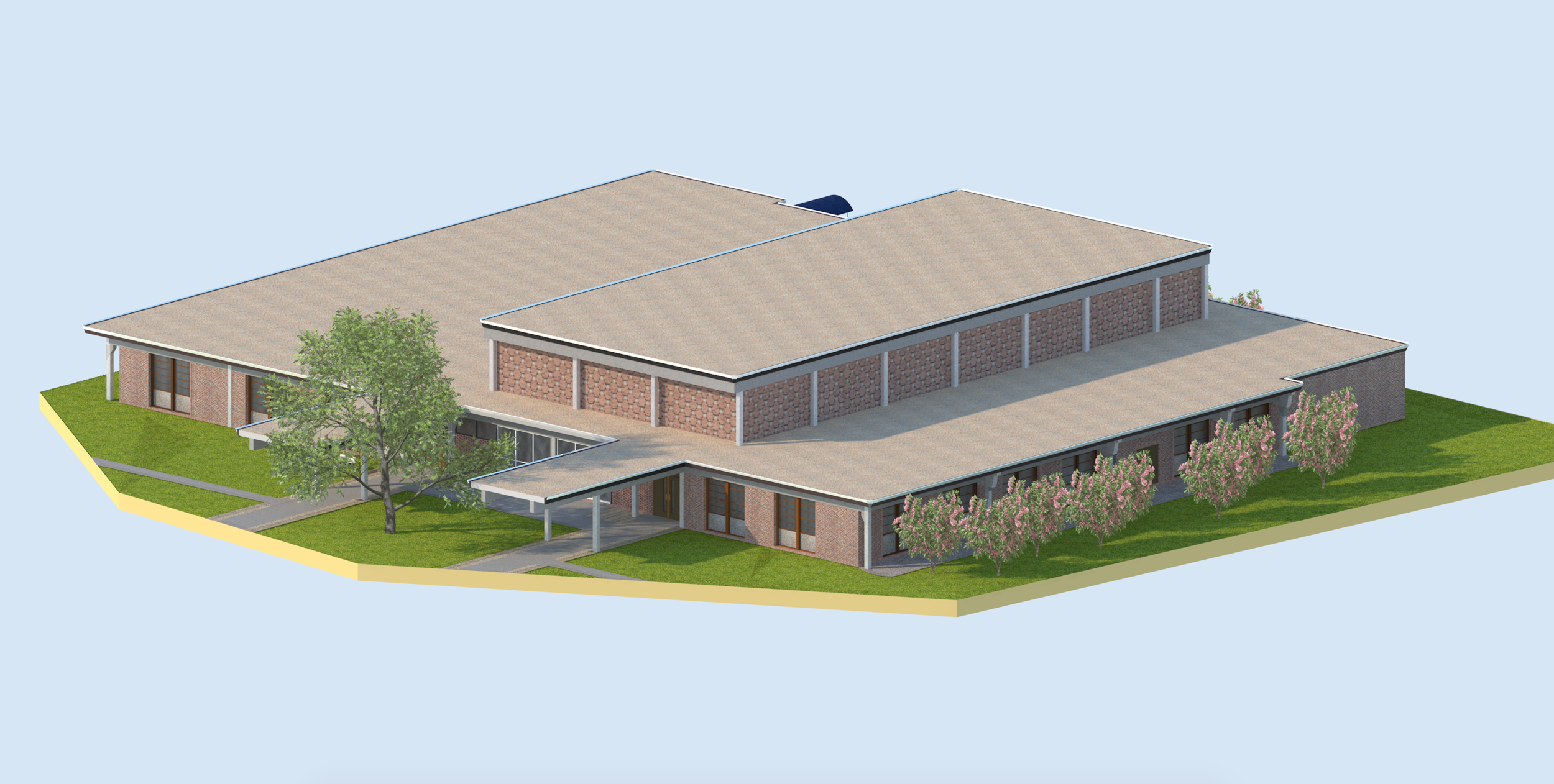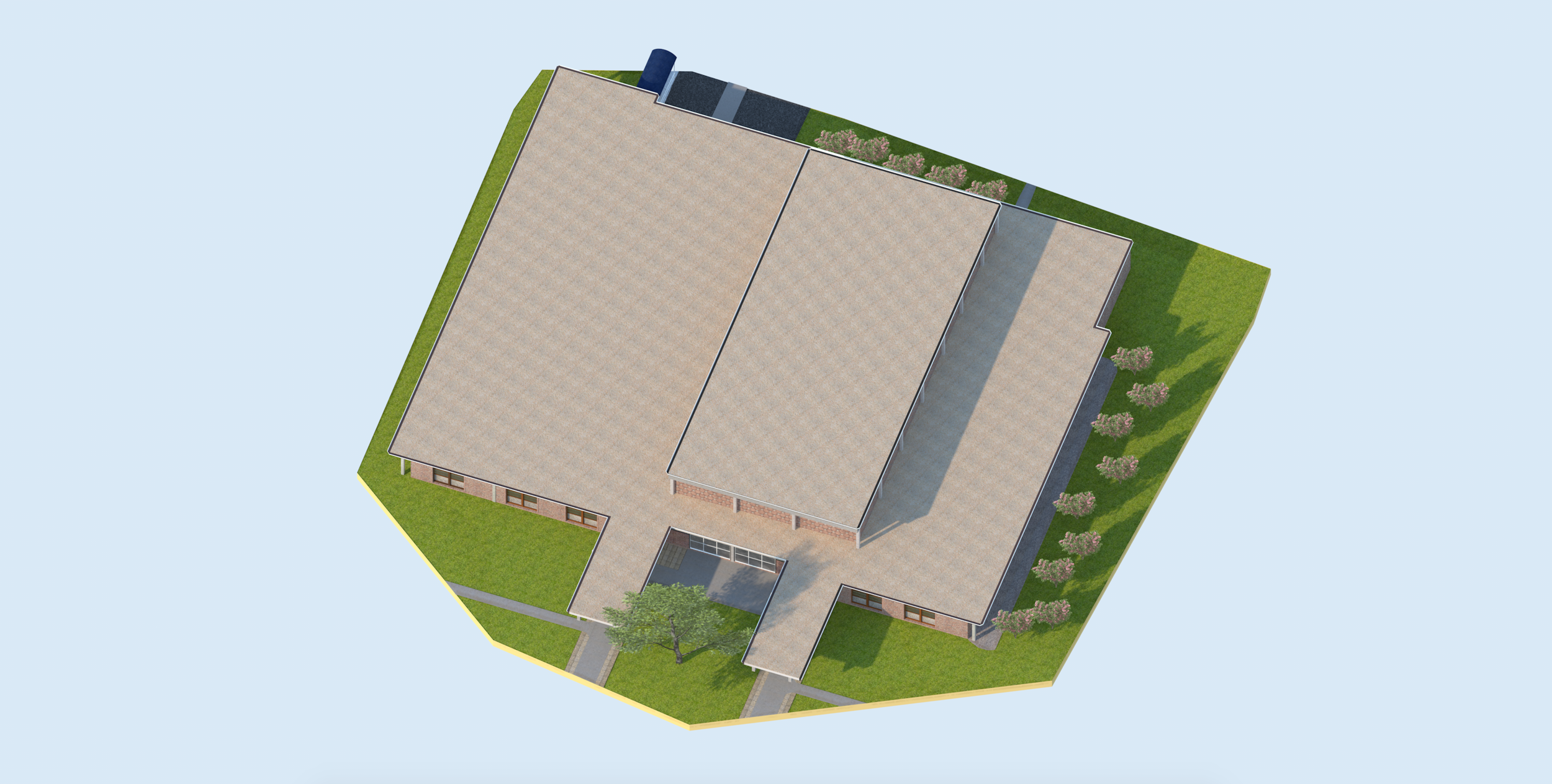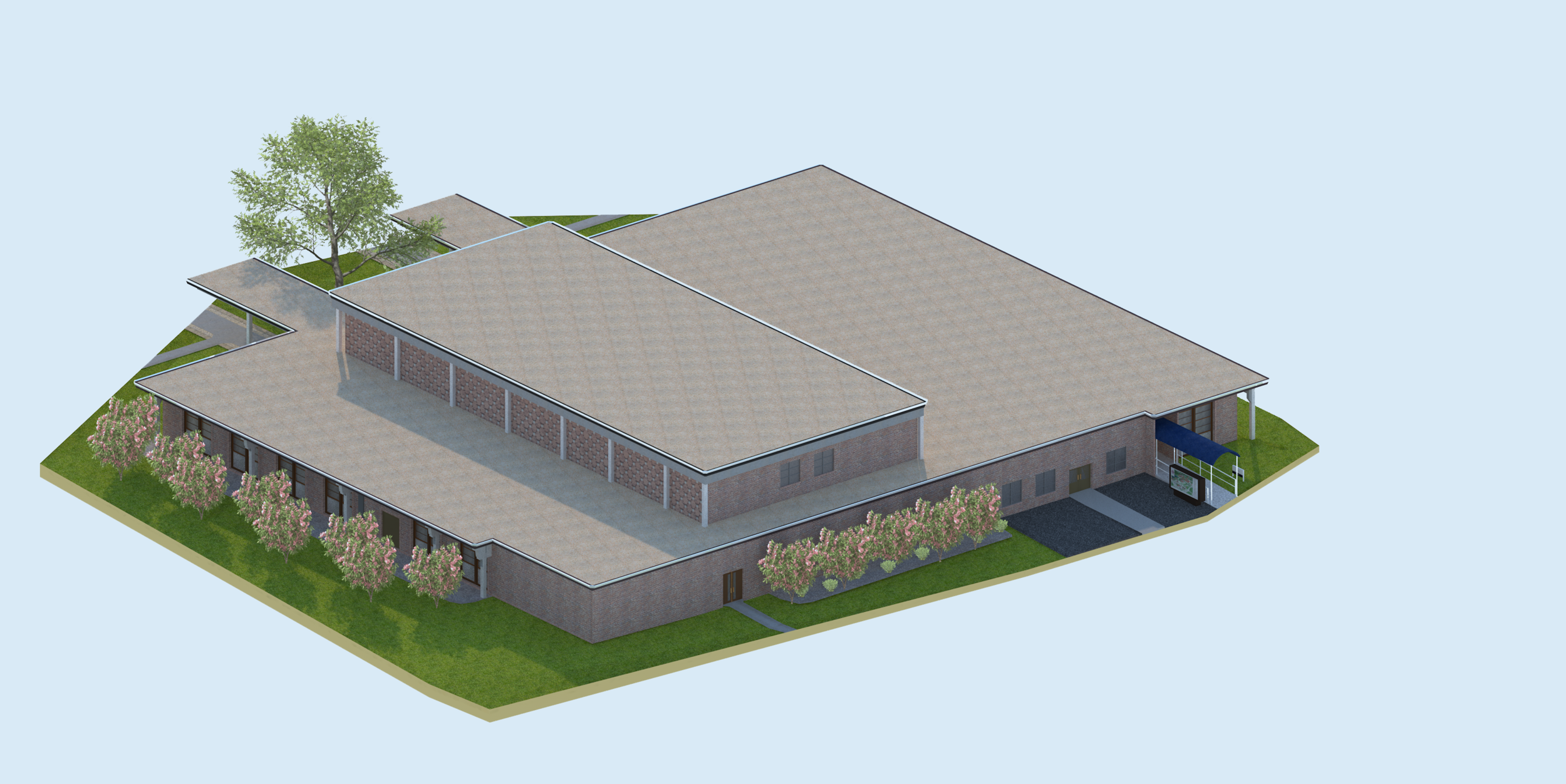This was a final for a CAD class -- we were to create a 3D model of a complex space, sourcing as many textures as possible from our site. It was completed over the course of three weeks, in the midst of preparing for finals for other classes. Each rendering took around 8 hours to complete. My Vectorworks file is available upon request.
These are some of the interesting things I've learned over the course of this project.
- When using Renderworks grass textures, here's something to remember: In OpenGL view the grass texture will act normally. However, when you flip into one of the Renderworks modes, the highest point of the grass will be rendered below the bottom of the plane it's associated with. This means, as you see in this first picture, that if I were to draw a polygon on top of the grass plane, and go into Renderworks, that polygon will be floating.
- An easy way to remedy would have been to extrude the drawn-on pathway below the "new" ground level. Alternatively, one could raise the grass plane (but that would require trial-end-error tests
- Interactions between plane/perimeter/cylinder Texture Attribute Mapping are truly strange.
- If you have an object that you know exists more than even ONCE, make it a symbol.
- When you have to close corners with 3D polygons, it's universally better to start with a complex extrude, as opposed to a simple one that you've subtracted solids from.
- There's some weird interaction between the way things are extruded and how their 3D orientation is decided -- That is, there were some points where I would double-click to edit an extrude and find that the "extrude view" has the rest of my model in grey (as is normal), but upside down, or rolled 90º. This made it somewhat difficult to navigate at times, and had I solved that problem I could've worked faster.
- It's nearly impossible to create a decently-tiling rocky roof texture, to my experience.






